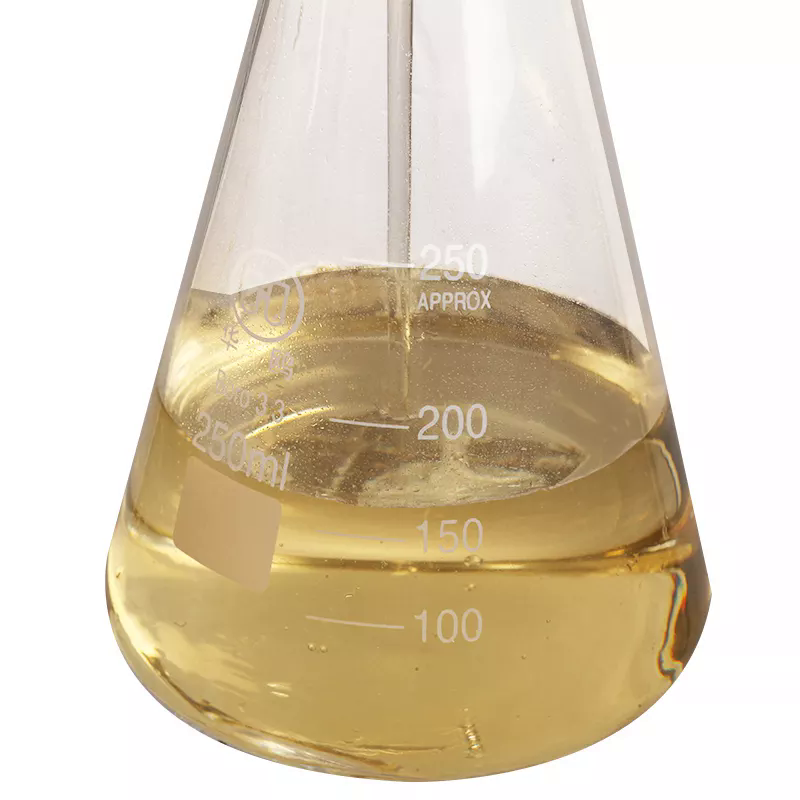2-DODECEN-1-YLSUCCINIC ANHYDRIDE
Synonym(s):DDSA;Dodecenylsuccinic anhydride
- CAS NO.:26544-38-7
- Empirical Formula: C16H26O3
- Molecular Weight: 266.38
- MDL number: MFCD00005528
- EINECS: 247-781-6
- SAFETY DATA SHEET (SDS)
- Update Date: 2025-01-27 09:38:02

What is 2-DODECEN-1-YLSUCCINIC ANHYDRIDE?
Chemical properties
clear yellow viscous liquid
The Uses of 2-DODECEN-1-YLSUCCINIC ANHYDRIDE
DDSA can be used as a hardener that facilitates the curing the of epoxy resin. It can also be used in the formation of glycine based surfactants.
General Description
Dodecenylsuccinic anhydride, mixture of isomers (DDSA) belongs to the class of long chained aliphatic anhydrides that are used as catalysts and organic acid anhydride based hardeners that find usage in electrical industry.
Properties of 2-DODECEN-1-YLSUCCINIC ANHYDRIDE
| Melting point: | 41-43 °C(lit.) |
| Boiling point: | 180-182 °C5 mm Hg(lit.) |
| Density | 1.00 g/mL at 20 °C |
| vapor density | 9.2 (vs air) |
| vapor pressure | <1 mm Hg ( 20 °C) |
| refractive index | 1.477-1.479 |
| Flash point: | 352 °F |
| storage temp. | Inert atmosphere,Room Temperature |
| solubility | 10g/L in organic solvents at 20 ℃ |
| form | clear liquid to cloudy liquid |
| color | Light yellow to Yellow to Orange |
| Water Solubility | 20mg/L at 22℃ |
| CAS DataBase Reference | 26544-38-7(CAS DataBase Reference) |
| EPA Substance Registry System | 2,5-Furandione, dihydro-3-(tetrapropenyl)- (26544-38-7) |
Safety information for 2-DODECEN-1-YLSUCCINIC ANHYDRIDE
| Signal word | Warning |
| Pictogram(s) |
 Exclamation Mark Irritant GHS07 |
| GHS Hazard Statements |
H317:Sensitisation, Skin H319:Serious eye damage/eye irritation H413:Hazardous to the aquatic environment, long-term hazard |
| Precautionary Statement Codes |
P261:Avoid breathing dust/fume/gas/mist/vapours/spray. P264:Wash hands thoroughly after handling. P264:Wash skin thouroughly after handling. P273:Avoid release to the environment. P280:Wear protective gloves/protective clothing/eye protection/face protection. P302+P352:IF ON SKIN: wash with plenty of soap and water. P305+P351+P338:IF IN EYES: Rinse cautiously with water for several minutes. Remove contact lenses, if present and easy to do. Continuerinsing. |
Computed Descriptors for 2-DODECEN-1-YLSUCCINIC ANHYDRIDE
| InChIKey | UYCICMIUKYEYEU-ZHACJKMWSA-N |
New Products
3-Iodophenylacetic acid 3-Pyridineacetonitrile, α-hydroxy- 2-Propanamine, 1-chloro-, hydrochloride (9CI) 3-(hexyloxy)-4-(pyridin-3-yl)-1,2,5-thiadiazole 2-Hexyn-1-ol Dibenzo-18-crown-6 Nickel(II) perchlorate hexahydrate, 98% 4-Bromophenylacetonitrile, 95% 3-Bromo-4-fluoroaniline, 97% Sodium tetraborate decahydrate, 98% Palladium(II) acetate, trimer, Pd 99% 4-Bromo-2-chlorotoluene, 97% N N Dimethylformamide Dimethyl Acetal (Dmf Dma) 2,3-Dichloro Benzoyl Cyanide [Side Chain] Bis(2-Chloroethyl) Amine Hydrochloride L-Glutamic Acid Diethyl Ester Hydrochloride 5-(Difluoromethoxy)-2-Mercaptobenzimidazole 1-Ethyl-3-(3-Dimethylaminopropyl)-Carbodiimide Hydrochloride [EDC Hcl] 1,4-Napthoquinone Bromoiodomethane Sodium Bicarbonate Methylene Dichloride (MDC) Ethyl Acetate Indole-3-Carbinol (I3C)Related products of tetrahydrofuran








You may like
-
 Tetrapropenylsuccinic anhydride 98%View Details
Tetrapropenylsuccinic anhydride 98%View Details -
 Dodecenylsuccinic anhydride CAS 26544-38-7View Details
Dodecenylsuccinic anhydride CAS 26544-38-7View Details
26544-38-7 -
 Tetrapropenylsuccinic Anhydride (mixture of branched chain isomers) CAS 26544-38-7View Details
Tetrapropenylsuccinic Anhydride (mixture of branched chain isomers) CAS 26544-38-7View Details
26544-38-7 -
 Epoxy embedding medium, hardener DDSA CAS 26544-38-7View Details
Epoxy embedding medium, hardener DDSA CAS 26544-38-7View Details
26544-38-7 -
 Dodecenylsuccinic anhydride, mixture of isomers CAS 26544-38-7View Details
Dodecenylsuccinic anhydride, mixture of isomers CAS 26544-38-7View Details
26544-38-7 -
 Cyclohexane, (2-propynyloxy)- 67967-07-1 98+View Details
Cyclohexane, (2-propynyloxy)- 67967-07-1 98+View Details
67967-07-1 -
 3-Iodophenylacetic acid 1878-69-9 98+View Details
3-Iodophenylacetic acid 1878-69-9 98+View Details
1878-69-9 -
 132945-75-6 (S)-1-Boc-3-methanesulfonyloxy-pyrrolidine 98+View Details
132945-75-6 (S)-1-Boc-3-methanesulfonyloxy-pyrrolidine 98+View Details
132945-75-6
Statement: All products displayed on this website are only used for non medical purposes such as industrial applications or scientific research, and cannot be used for clinical diagnosis or treatment of humans or animals. They are not medicinal or edible.
